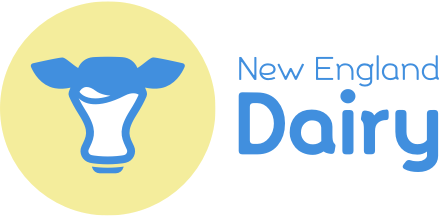 Plant-Based Dietary Patterns
Plant-Based Dietary Patterns
A key tactic for healthy eating is to include a variety of foods that are optimal for overall health. Combining lean proteins from animal and plant-based sources with fruits, vegetables, and nutritious grains can ensure well-balanced eating. Establishing a dietary pattern that includes an array of plant-based, whole foods can be one of the best ways to prioritize health.
Developing a more plant-based approach to eating does not mean excluding dairy foods or animal-based foods. In fact, some of the healthiest, plant-forward dietary patterns in the world recommend dairy, since these foods have nutrients many Americans have difficulty getting from other food groups.
What is Lacto-Vegetarianism?
Vegetarianism is not a one-size-fits-all eating pattern. Based on someone’s food preferences, a vegetarian may include or exclude certain foods. A lacto-vegetarian dietary pattern (or lacto-vegetarianism), for instance, typically excludes meat, fish, and poultry but permits dairy products such as milk, yogurt, and cheese. Fruits, vegetables, healthy grains, and other forms of protein are also permitted and recommended to ensure a well-balanced dietary pattern.
Including dairy in a plant-forward dietary pattern has its health benefits, since these foods provide nutrients hard to find in other food groups. That’s why the Dietary Guidelines for Americans recommend at least three, daily servings of dairy. Going lacto-vegetarian also helps prioritize less of the foods most Americans tend to overeat and more of the foods they do not–dairy, fruits, and vegetables among them.
Nutritional Benefits of a Lacto-Vegetarian Diet

Due to their dietary restrictions, certain vegetarians may have difficulty acquiring some nutrients needed to maintain optimal health. Supplementing a plant-based dietary pattern with dairy helps fill in those nutritional gaps and ensures these necessary nutrients are not missed.
Milk, for instance, contains calcium, vitamin D, and potassium–all considered “nutrients of concern” since many Americans do not get enough in their dietary pattern. Milk, yogurt, and cheese are also sources of high-quality protein, another crucial nutrient that some vegetarians might have difficulty obtaining. A systematic review and meta-analysis from the National Osteoporosis Foundation concluded that dairy foods and plant-based protein sources both support bone health.
Complementing plant-based eating with dairy is also an approach highlighted by dietary patterns considered the healthiest on the planet. Along with dairy, the Mediterranean diet also prioritizes fruits, vegetables, whole grain foods, lean proteins, and healthy fats. The Dietary Approaches to Stop Hypertension, or DASH Diet, similarly promotes a mainly lacto-vegetarian dietary pattern that recommends three, daily servings of dairy.
Lacto-Vegetarian Diet Sustainability
In its day-to-day operations, the U.S. dairy industry and New England’s farmers continue to keep the environment top of mind. Adhering to a mainly lacto-vegetarian dietary pattern means supporting an environmentally sustainable industry that continually produces affordable, nutrient-rich foods with as minimal impact on the earth’s resources as possible.
Research continues to underscore this impact. A 2013 study concluded that dairy only accounts for about two percent of total greenhouse gas emissions in the U.S. Moreover, U.S. dairy cows generate the lowest greenhouse gas emissions per gallon of milk in the world. These achievements are only the beginning; the dairy industry is committed to further reduce its carbon footprint and improve water usage and quality by 2050.
Consuming dairy products such as milk also ensures that you’re buying local (milk goes from farm to store in only two days, on average) and supporting a dedicated team of regional farmers.
How to Add Dairy to a Lacto-Vegetarian Diet
To meet national recommendations, most lacto-vegetarians should aim to consume at least three, daily servings of dairy, which include:
- one cup, or one serving, of milk
- one cup, or one serving, of yogurt or Skyr
- two cups, or one serving, of cottage cheese
- one-and-a-half ounces, or one serving, of natural cheese
As for incorporating dairy into a plant-based dietary pattern, it could not be easier. For starters, try:
Need more inspiration? Visit our recipe page for additional lacto-vegetarian dishes. And if hungry for more, visit the MyPlate recipe database for additional vegetarian options.

 Plant-Based Dietary Patterns
Plant-Based Dietary Patterns




